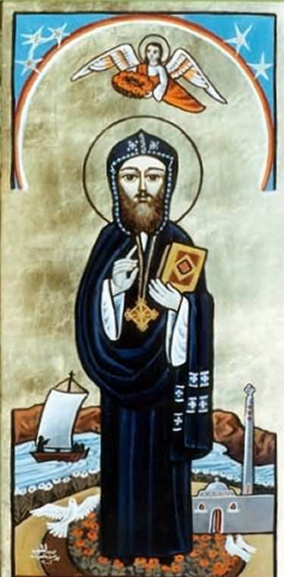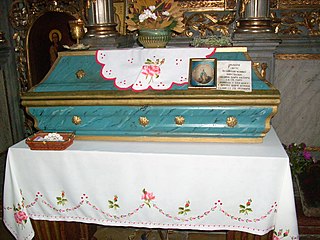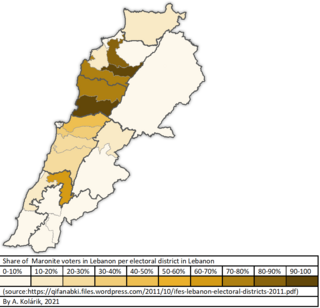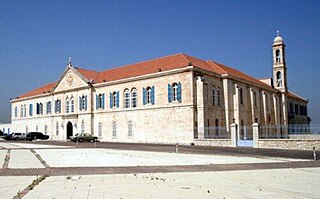Related Research Articles

John Chrysostom was an important Early Church Father who served as archbishop of Constantinople. He is known for his preaching and public speaking, his denunciation of abuse of authority by both ecclesiastical and political leaders, his Divine Liturgy of Saint John Chrysostom, and his ascetic sensibilities. The epithet Χρυσόστομος means "golden-mouthed" in Greek and denotes his celebrated eloquence. Chrysostom was among the most prolific authors in the early Christian Church.
Pope Anastasius II was the bishop of Rome from 24 November 496 to his death. He was an important figure in trying to end the Acacian schism, but his efforts resulted in the Laurentian schism, which followed his death. Anastasius was born in Rome, the son of a priest, and is buried in St. Peter's Basilica.
The 510s decade ran from January 1, 510, to December 31, 519.

Year 518 (DXVIII) was a common year starting on Monday of the Julian calendar. At the time, it was known as the Year of the Consulship of Paulus without colleague. The denomination 518 for this year has been used since the early medieval period, when the Anno Domini calendar era became the prevalent method in Europe for naming years.
St. Flavian II of Antioch was the Patriarch of Antioch from 498 until his deposition and subsequent banishment in 512.
The Patriarch of Antioch is a traditional title held by the bishop of Antioch. As the traditional "overseer" of the first gentile Christian community, the position has been of prime importance in Pauline Christianity from its earliest period. This diocese is one of the few for which the names of its bishops from the apostolic beginnings have been preserved. Today five churches use the title of patriarch of Antioch: one Oriental Orthodox ; three Eastern Catholic ; and one Eastern Orthodox.

Severus the Great of Antioch, also known as Severus of Gaza or the Crown of Syrians, was the Patriarch of Antioch, and head of the Syriac Orthodox Church, from 512 until his death in 538. He is venerated as a saint in the Oriental Orthodox Church, and his feast day is 8 February.

The Greek Orthodox Patriarchate of Antioch, also known as the Antiochian Orthodox Church and legally as the RūmOrthodox Patriarchate of Antioch and All the East, is an autocephalous Greek Orthodox church within the wider communion of Eastern Orthodox Christianity and one of the historic Pentarchy. Headed by the Greek Orthodox patriarch of Antioch, it considers itself the successor to the Christian community founded in Antioch by the Apostles Peter and Paul. It is one of the largest Christian denominations of the Middle East, alongside the Copts of Egypt and the Maronites of Lebanon.
Pope Anastasius of Alexandria, 36th Pope of Alexandria & Patriarch of the See of St. Mark. During his reign, despite being barred from the city of Alexandria, he met with the Patriarch of Antioch as they worked to arrange the unification of their two churches.
Anastasius I of Antioch was the Patriarch of Antioch twice.

Anastasius Sinaita, also called Anastasius of Sinai or Anastasius the Sinaite, was a Greek writer, priest and abbot of Saint Catherine's Monastery on Mount Sinai.
Hellenistic Judaism was a form of Judaism in classical antiquity that combined Jewish religious tradition with elements of Hellenistic culture. Until the early Muslim conquests of the eastern Mediterranean, the main centers of Hellenistic Judaism were Alexandria in Egypt and Antioch in Syria, the two main Greek urban settlements of the Middle East and North Africa, both founded in the end of the fourth century BCE in the wake of the conquests of Alexander the Great. Hellenistic Judaism also existed in Jerusalem during the Second Temple Period, where there was a conflict between Hellenizers and traditionalists.
Adversus Judaeos are a series of fourth century homilies by Saint John Chrysostom directed to members of the church of Antioch of his time, who continued to observe Jewish feasts and fasts. Critical of this, he cast Judaism and the synagogues in his city in a critical and negative light.

Anastasius was a Christian convert who suffered martyrdom with Anthony, Julian, Celsus and Marcionilla, during the Diocletianic Persecution. He is supposed to have converted after being raised from the dead by Saint Julian of Antioch. His memorial is on 9 January. Anastasius is one of the 140 Colonnade saints which adorn St. Peter's Square. His relics are interred at the Ravanica Monastery in Serbia.

Early Christianity, also called the Early Church or Paleochristianity, describes the historical era of the Christian religion up to the First Council of Nicaea in 325. Christianity spread from the Levant, across the Roman Empire, and beyond. Originally, this progression was closely connected to already established Jewish centers in the Holy Land and the Jewish diaspora. The first followers of Christianity were Jews who had converted to the faith, i.e. Jewish Christians. Early Christianity contains the Apostolic age and is followed by, and substantially overlaps with, the Patristic era.
Gregory of Antioch was the Eastern Orthodox Patriarch of Antioch from 571 to 593.

Lebanese Maronite Christians are adherents of the Maronite Church in Lebanon, which is the largest Christian denomination in the country. The Maronite Church is an Eastern Catholic Church in full communion with the worldwide Catholic Church.

The Maronite Church is an Eastern Catholic sui iuris particular church in full communion with the pope and the worldwide Catholic Church, with self-governance under the Code of Canons of the Eastern Churches. The current head of the Maronite Church is Patriarch Bechara Boutros al-Rahi, who was elected in March 2011 following the resignation of Patriarch Nasrallah Boutros Sfeir. The current seat of the Maronite Patriarchate is in Bkerke, northeast of Beirut, Lebanon. Officially known as the Antiochene Syriac Maronite Church, it is part of Syriac Christianity by liturgy and heritage.

This article lists historical events that occurred between 401–500 in modern-day Lebanon or regarding its people.
References
- 1 2 Andrea U. De Georgi; A. Asa Eger (May 31, 2021). Antioch: A History. Routledge. p. 219. ISBN 9781138845244 . Retrieved 29 December 2021.
- ↑ J. D. Frendo, "Who killed Anastasius II?" Jewish Quarterly Review vol. 72 (1982), 202-4)
- ↑ Saint Anastasius II of Antioch Patron Saint Index Archived January 2, 2009, at the Wayback Machine